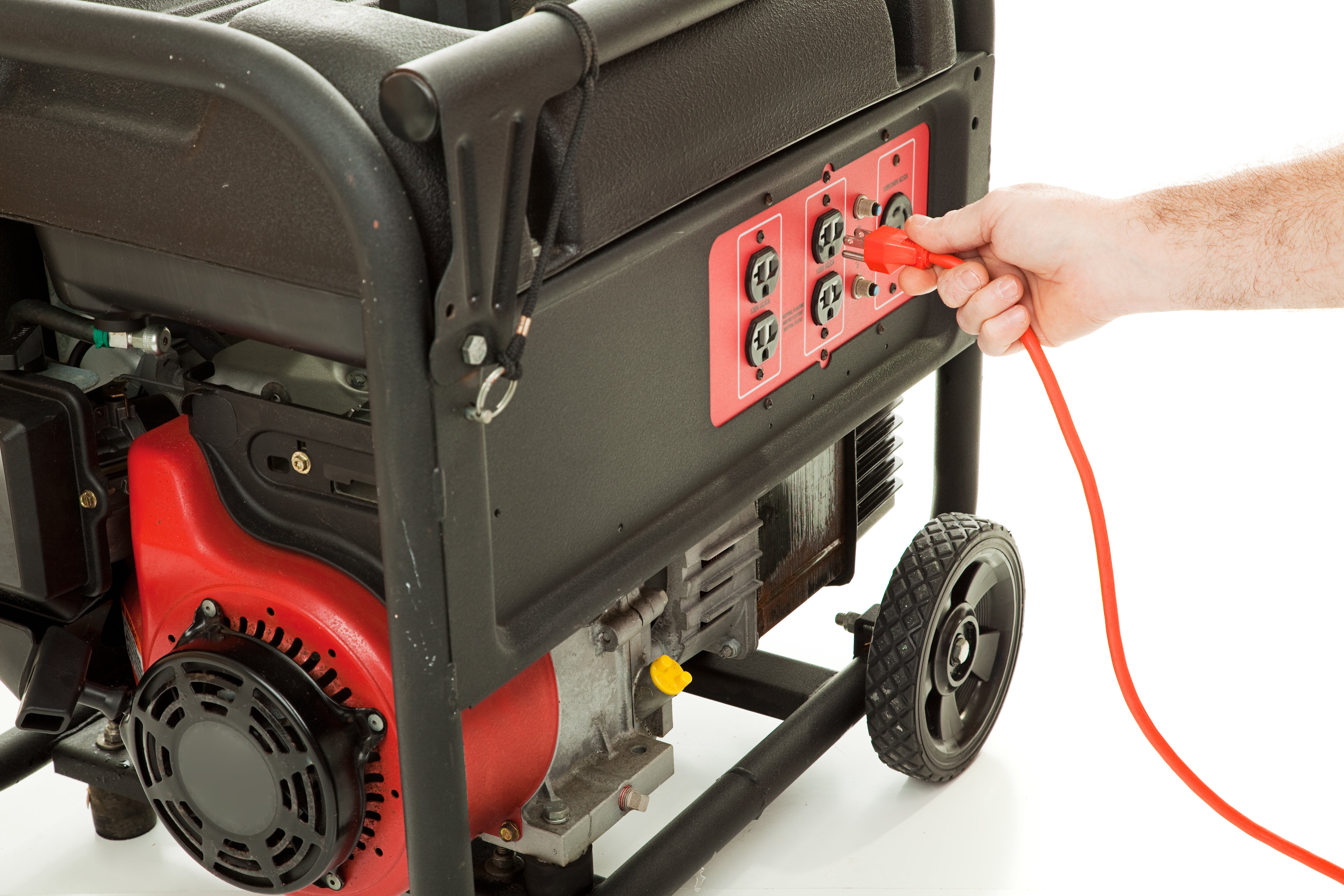Be Prepared to Weather the Next Big Storm
with Properly Installed Backup Generators
by
KANYON PAYNE
United Cooperative Services is known for providing safe, affordable and reliable electric service. Sometimes, Mother Nature affects operations and members’ daily living.

Electricity is often taken for granted until we don’t have it. Many of United’s members experienced this during the 2018 ice storm that affected Stephenville and the western part of United’s service territory. Due to this abnormality, many members have thought about installing backup generators.
When consumers use a backup generator, they must have an alternative fuel source to power it, such as natural gas, propane or diesel fuel. Out of these three fuel sources, natural gas is the most economical. However, many people don’t have access to natural gas where they live. Those with propane on site instead may transition to a propane fuel generator. For those without access to either, a diesel fuel generator can be ideal. Diesel fuel is an easily attainable energy source available at any gas station that can be stored on site.
When looking at backup generators, consumers should note the two types—portable generators and standby generators. Before purchasing, people should determine which appliances they want to power during power outages. Some may prefer to power certain critical loads like refrigerators, freezers and well equipment, while others may want to power the whole house. Most major generator brands have an online calculator that can help consumers determine what size system they need. For example, put a 1,500-1,999-square-foot home with one sump pump, one well pump, two refrigerators and one freezer into generator manufacturer Generac’s online calculator, it will recommend the need for a 16-kW standby generator. To calculate your needs, simply type generator calculator into any preferred search engine.
Portable Backup Generators
Portable backup generators can be plugged in on an as-needed basis. They are typically smaller in size and capacity and used for only a few small loads such as a few lights or a refrigerator or two. Power outputs for portable generators typically range 1,200-9,000 watts of constant power. Many portable generators have two different power ratings.
One is starting watts, and the other is running watts. Consumers should size the equipment needed for backup power based on the running watts. A portable backup generator typically costs anywhere from $250 to $3,000, and the cost relates to the generator’s output capacity. Fuel consumption can range 8-20 gallons of fuel per day for backup generators.
There are several ways to connect portable generators to a home. The first method uses extension cords from the appliance and plugging it directly into the generator. This is the most cost-effective way to power certain items in a home because it does not involve installing additional equipment. However, this limits the number of items homeowners can power.
The second option is a separate sub-panel and manual transfer switch. This option requires an outdoor outlet or port compatible with the extension cord for the generator, and homeowners must install a separate sub-panel dedicated strictly to the critical loads they want powered when an outage occurs. The separate sub-panel comes with a transfer switch that can transfer the power from the grid to the generator. With this type of setup, homeowners flip the transfer switch manually, and it will switch the home to receive power from the generator only.
Another way portable generators can be hooked up is through a Generlink. This device is placed between United’s utility meter and the home’s electric service terminals. The Generlink device has a port at the bottom used to plug the generator into the main service. With this type of setup, the generator will feed the entire house. However, most portable generators are not large enough to power the whole house. Most homeowners would need to turn off the breakers to unnecessary circuits and just leave the breakers to the critical loads like lights, refrigerators, or well pumps. Homeowners who choose a Generlink will need to call their United office so that the co-op may disconnect the meter and allow the electrician to install the Generlink.
Standby Backup Generators
Standby backup generators are permanent, fixed generators installed by professionals. They are placed on the outside of the home and are rated for the outside elements.
Typical capacity is 8,000-22,000 watts, although some exceed 40,000 watts. These standby home generators typically use 10-50 gallons of fuel a day. Costs for these systems run about $1,500-$6,000, though this does not include the cost for installation by a licensed technician.
One way standby generators differ from portable generators is through their connection. They are connected through an automatic transfer switch (ATS) that senses the current. Once an outage occurs, this will automatically switch over to the generator to power the entire home or dedicated sources. These devices make the process of switching energy sources seamless. With a standby generator, homeowners may experience only a few brief seconds of a power outage and will not have to do any manual hook ups of extension cords or flipping breakers. Standby generators can power the whole home if necessary, whereas portable generators are only large enough to power a few loads.
Safety
Consumers should always know how to properly and safely operate any backup generator, as not doing so can result in injury or even death. Due to this fact, United wants to make sure members understand how to operate their generators safely. Never operate portable generators in rainy, wet or icy conditions. The wet surface can conduct electricity causing a potential shock hazard for anyone touching the generator.
United always recommends inspecting the extension cords used with a generator. Ensure the cords are not undersized, ungrounded, or damaged. Contact with worn or damaged extension cords can cause electrocution. United also recommends never filling a generator with fuel while its operating, as vapors from the gasoline could ignite due to the hot surfaces around the generator.
Always operate the generator in a space that can be vented. An enclosed area can cause overheating, and breathing in the exhaust can be detrimental to your health or even fatal. Keep the factory setting for the engine speed. Tampering with the engine speed could result in overheating, fire or damage to major components.
When the power does go out, United crews will always strive to get members back on as quickly as possible. Due to this reputation, most of United’s members view backup generators as an insurance policy. For more information on backup generators, call your local United office.


